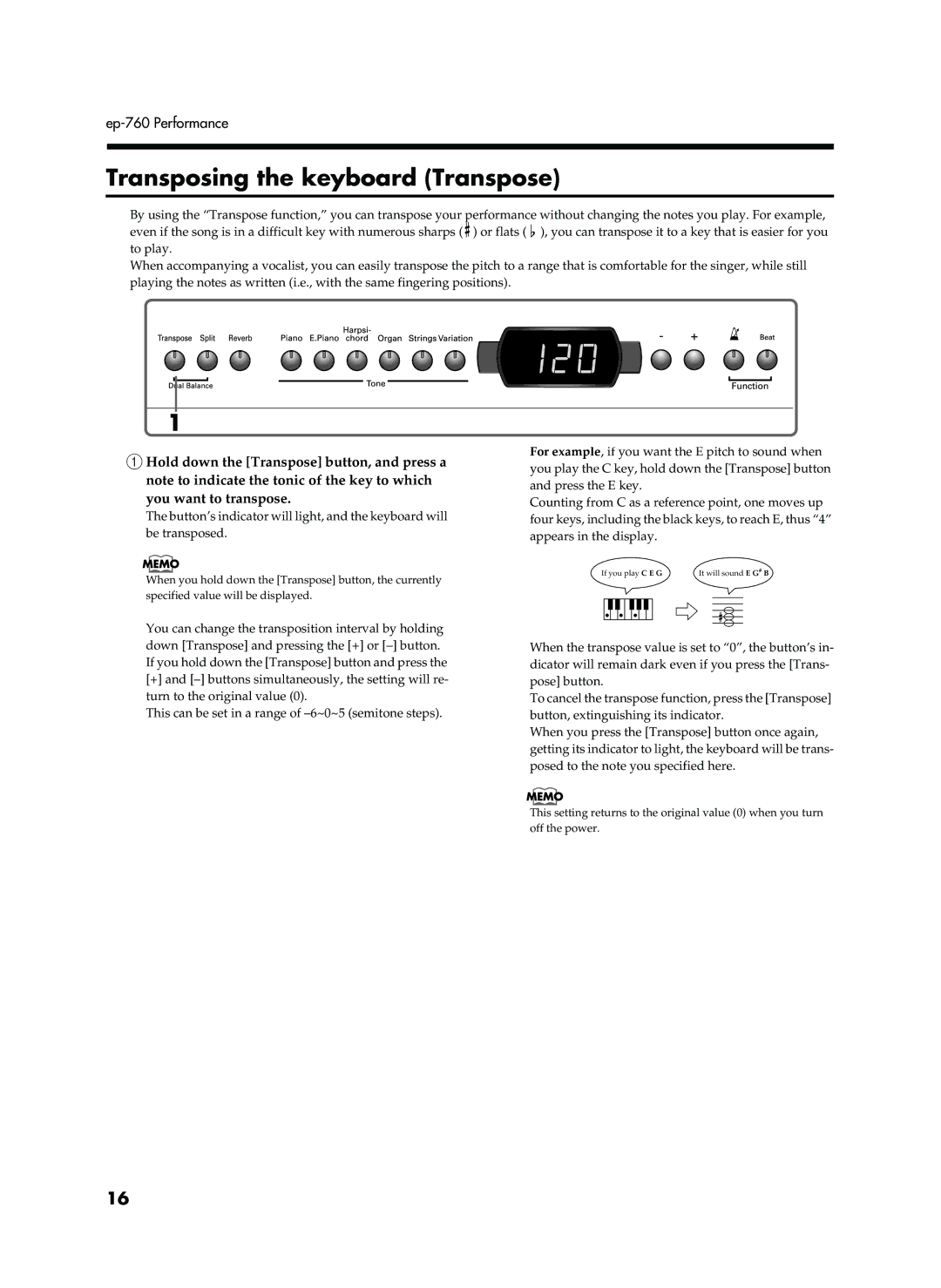
Transposing the keyboard (Transpose)
By using the “Transpose function,” you can transpose your performance without changing the notes you play. For example, even if the song is in a difficult key with numerous sharps (![]() ) or flats (
) or flats ( ![]() ), you can transpose it to a key that is easier for you to play.
), you can transpose it to a key that is easier for you to play.
When accompanying a vocalist, you can easily transpose the pitch to a range that is comfortable for the singer, while still playing the notes as written (i.e., with the same fingering positions).
1
AHold down the [Transpose] button, and press a note to indicate the tonic of the key to which you want to transpose.
The button’s indicator will light, and the keyboard will be transposed.
When you hold down the [Transpose] button, the currently specified value will be displayed.
You can change the transposition interval by holding down [Transpose] and pressing the [+] or
[+]and
This can be set in a range of
For example, if you want the E pitch to sound when you play the C key, hold down the [Transpose] button and press the E key.
Counting from C as a reference point, one moves up four keys, including the black keys, to reach E, thus “4” appears in the display.
If you play C E G | It will sound E G# B | ||||||||
|
|
|
|
|
|
|
|
|
|
|
|
|
|
|
|
|
|
|
|
|
|
|
|
|
|
|
|
|
|
When the transpose value is set to “0”, the button’s in- dicator will remain dark even if you press the [Trans- pose] button.
To cancel the transpose function, press the [Transpose] button, extinguishing its indicator.
When you press the [Transpose] button once again, getting its indicator to light, the keyboard will be trans- posed to the note you specified here.
This setting returns to the original value (0) when you turn off the power.
16
